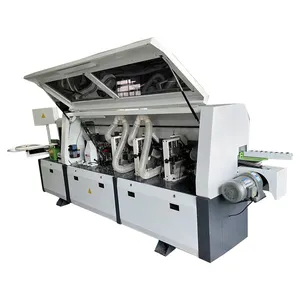Popular in your industry

































































Top categories
About industrial sewing overlock machine
Industrial sewing overlock machines, also known as industrial overlockers or industrial serger machines, are specialized devices designed to sew, trim, and finish the edges of fabric simultaneously. These machines are widely used in the textile and garment industry to create durable and professional-looking seam finishes. They are equipped with multiple threads and loopers that work in conjunction to stitch over the fabric's edge, preventing fraying and providing a clean and neat appearance. The high-speed and efficient operation of industrial sewing overlock machines significantly streamline the production process, making them indispensable in settings where a large volume of sewing is required.
Types of industrial sewing overlock machines
Industrial overlock machines vary in terms of the number of threads they can handle, with common configurations being 2, 3, 4, or 5 threads. The choice of thread count affects the types of stitches the machine can produce, with higher thread counts allowing for more complex and secure seams. Additionally, there are differential-feed overlock machines, which feature a feed mechanism that can be adjusted to handle different types of fabrics. These machines are particularly useful for preventing stretching or puckering in knitted or stretch fabrics. For specialized applications, there are also industrial overlock and coverstitch machines, which combine the functionality of an overlock machine with that of a coverstitch machine. This hybrid design allows for both edge finishing and the creation of professional-looking hems and topstitches in a single operation. The type of industrial sewing overlock machine chosen depends on the specific requirements of the sewing project, such as the type of fabric, desired seam finish, and production volume.
Applications of industrial sewing overlock machines
The versatility and efficiency of industrial sewing overlock machines make them suitable for a wide range of applications within the textile and garment industry. In the production of garments, overlock coverstitch machines are commonly used to finish seams in knitwear, activewear, and lingerie, where stretch and durability are essential. Additionally, the ability to handle multiple threads simultaneously makes industrial overlock machines ideal for creating decorative edges and adding embellishments to various textile products. The automotive industry also benefits from the use of these machines to sew and finish upholstery, seat covers, and airbags, where strong and durable seams are crucial for safety and longevity. In the production of home textiles, such as bedding, curtains, and towels, industrial sewing overlock machines contribute to creating neat and professional finishes, enhancing the overall quality of the products.
Advantages of industrial sewing overlock machines
The primary advantage of industrial sewing overlock machines lies in their ability to simultaneously sew, trim, and finish fabric edges, significantly reducing production time and labor costs. This efficiency is further enhanced by the high-speed operation of these machines, allowing for the quick completion of large sewing projects. The finished seams created by industrial overlock machines are not only aesthetically pleasing but also durable and fray-resistant, ensuring the longevity of the sewn products. Moreover, the adaptability of these machines to handle various types of fabrics, from delicate silks to heavy denims, makes them versatile tools in the textile and garment industry. Additionally, the incorporation of advanced features, such as differential feed and automatic thread trimming, enhances the precision and quality of the finished seams. The robust construction and design of industrial sewing overlock machines contribute to their longevity and reliability in demanding production environments, making them indispensable assets for businesses in the textile and garment industry.

































